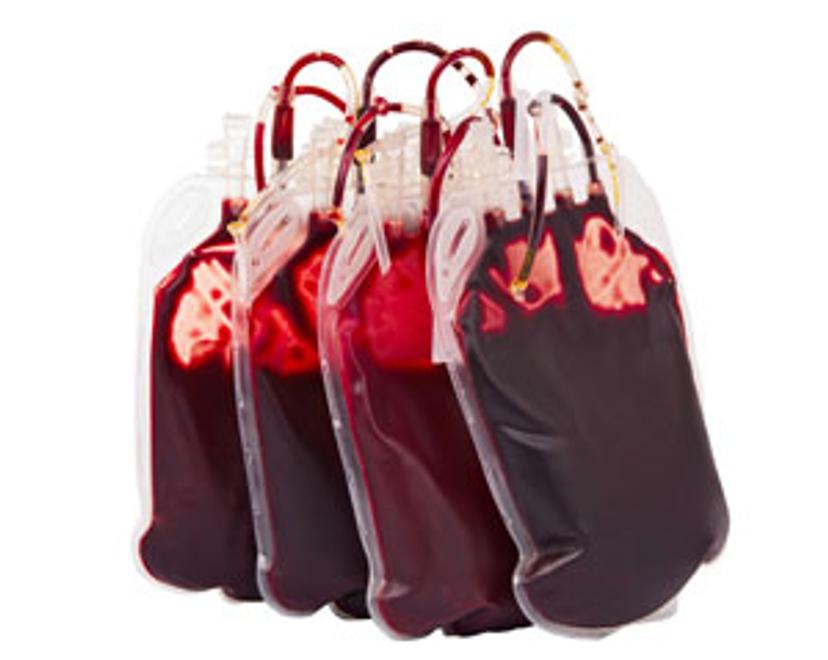Detecting Autologous Blood Transfusion with Clinical Biomarkers
Nicolas Leuenberger discusses a new blood doping study aimed at detecting cheats
6 Mar 2015

It is currently extremely difficult to ascertain whether an athlete has undertaken an autologous transfusion. The Swiss Laboratory for Doping Analyses LAD is capable of detecting every single substance or method prohibited by the World Anti-Doping Agency. This is only possible because the laboratory staff can rely on a variety of sophisticated chemical and analytical procedures.
This study is to look for biomarkers which can be used to detect prohibited autologous transfusions using DEHP-free blood bags
Nicolas Leuenberger The Swiss Laboratory for Doping Analyses
Blood doping refers to the methods used by athletes to increase the amount of oxygen in their blood stream, leading to enhanced performance. Autologous transfusion in relation to blood doping refers to the illicit process by which athletes draw their own blood and store it to be re-transfused at a later date. Legitimate autologous transfusion is also used by patients awaiting elective surgical procedures as a way of reducing the risks associated with homologous transfusions - transfusions of blood from a blood donor.
Nicolas Leuenberger, Certifying Scientist at The Swiss Laboratory for Doping Analyses (LAD), a WADA-accredited lab in Lausanne Switzerland, is currently undertaking a research study on methods of identifying illicit use of autologous transfusions. SelectScience spoke to Nicolas to find out more.
SN: Why is it important to identify these transfusions in athletes?
NL: We know from testimonies given by athletes that autologous transfusions are the most effective way of increasing red blood cells, and therefore oxygen capacity, in an athlete’s blood stream. It is currently extremely difficult to ascertain whether an athlete has undertaken an autologous transfusion; in fact there is currently no direct method for identifying this type of transfusion.
SN: What methods can you use to help determine autologous transfusions?
NL: We have already implemented the Athlete Biological Passport (ABP) which monitors an individual’s biological parameters over a sustained period of time. The ABP can be used to identify hematological parameter changes associated with autologous transfusion (such as Hb, hematocrit and reticulocyte count).
SN: What is the objective of your study?
NL: Although we have no current direct method of detecting autologous transfusions, we are able to detect when athletes have received a transfusion from blood bags containing di-(2-ethylhexyl)phthalate (DEHP), a plasticiser used to make transfusion blood bags more pliable. During a transfusion, significant amounts of DEHP leech into the bloodstream, the metabolites of which can be detected in the urine. Athletes are now aware of this phenomenon and have started to use DEHP-free blood bags. This study is to look for biomarkers which can be used to detect prohibited autologous transfusions using DEHP-free blood bags.
SN: Can you tell us more about the study that you are carrying out?
NL: We will be testing volunteers who have received autologous transfusions from either DEHP or DEHP-free blood bags. We will be testing them at different times, and using different matrices (serum, plasma, urine) to look for a variety of biomarkers that we believe could be used for detection of transfusions with DEHP-free blood bags.
When blood is stored in blood bags, several molecular changes occur in the red blood cells. These changes are known as ‘storage legions’. Autologous transfusion of these stored red cells can cause inflammation and increase the risk of infection. It has also been shown that transfusion with stored red cells produces extravascular hemolysis. Extravascular hemolysis causes an increase in total bilirubin and an increase of circulating non-transferrin-bound iron. This in turn produces inflammation and results in an increase of secreted proteins such as interleukin-6 (IL-6).
Circulating micro RNAs (miRNA) are also promising biomarkers for detecting physiological responses to any immune response resulting from autologous transfusion. miRNAs are stable and sensitive so they have the potential to serve as long-term biomarkers. These markers could be used in the blood doping field, but also for the detection of various diseases and injuries. We have previously shown that circulating miRNAs can be used to detect autologous blood transfusion with DEHP-blood bags. In this study, we will look at the presence of miRNAs in volunteers who have received a DEHP-free blood transfusion.
SN: How did you analyze your test specimens?
NL: We carried out analysis on each sample, looking at the same biomarkers in each one. We used the Sysmex XN Series analyzer to assess blood parameters; in particular we looked at red cell, white cell and reticulocyte counts, as well as hemoglobin and hematocrit. This analyzer is perfect for our study, as it is fully automated requiring no ‘hands on’ time. It also gives very precise reticulocyte and hemoglobin values.
We assessed clinical chemistry markers using the Siemens Dimension XPand. We have observed that bilirubin levels are increased following transfusions; however, bilirubin is sensitive to light, making it difficult to use as a biomarker. This is not the case for iron, which is very stable and would perhaps be a more suitable marker. We measured a range of analytes including free iron, total bilirubin, ferritin and C-reactive protein (CRP). The Siemens kits are cost effective for us, and the colormetric assays are a reliable and accurate way to detect these biomarkers.
We also measured IL-6 using a manual ELISA test and circulating miRNAs on the Roche 480 Light Cycler, using multiplexed RT-PCR. We used microarray plates that were pre-coated, making them suitable for testing large numbers of samples.
SN: What happens next? When will the results be published?
NL: We are very happy with the results that we have generated so far. We are now in the process of validating the data and are hoping to publish the papers in the summer. We are going to continue to collaborate with the Swiss Blood Transfusion Center and plan to carry out further studies in the future.
